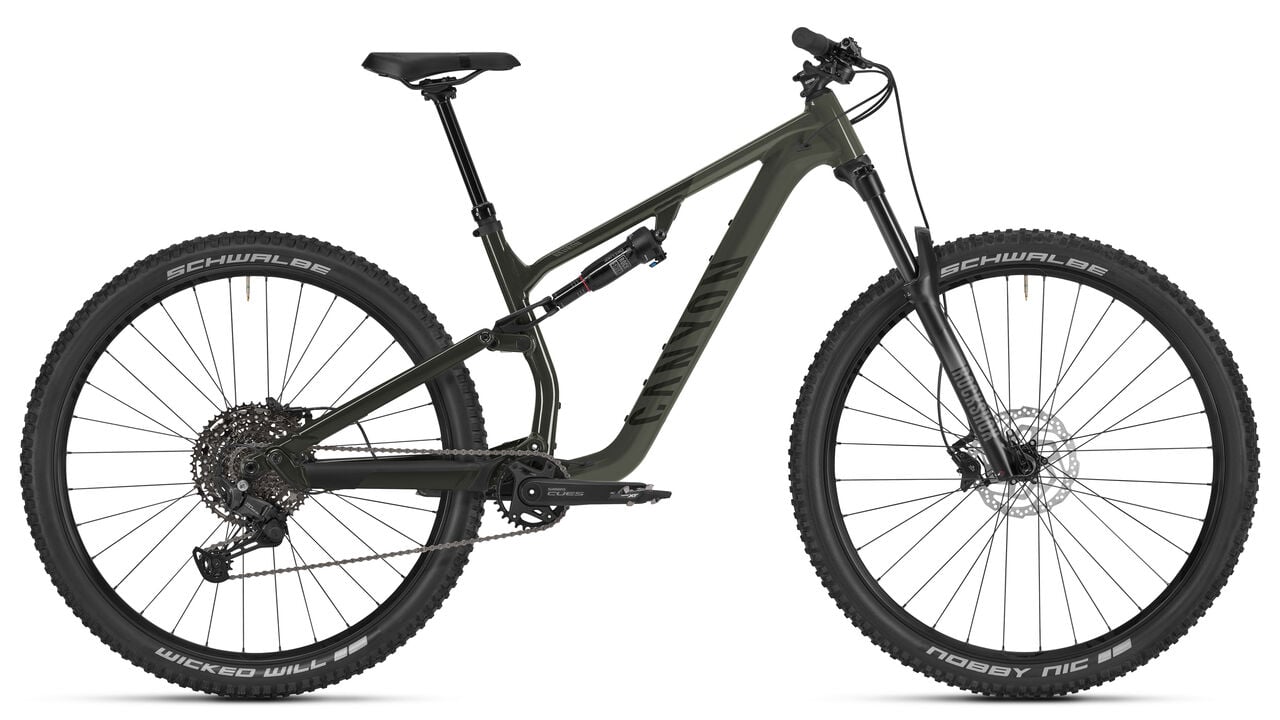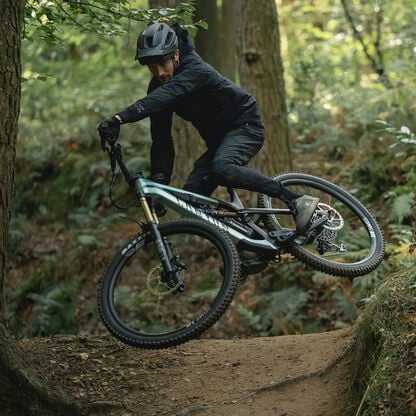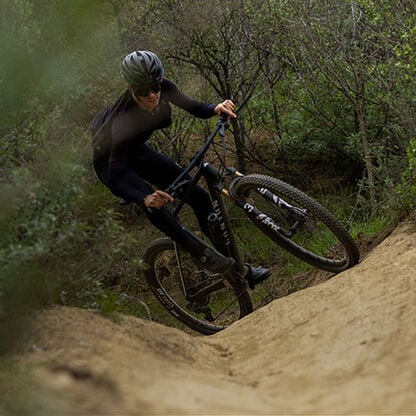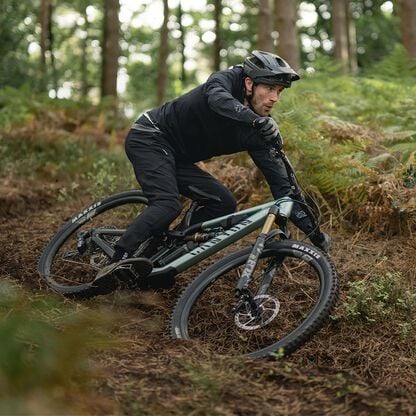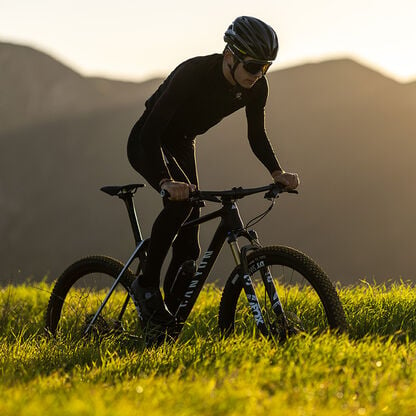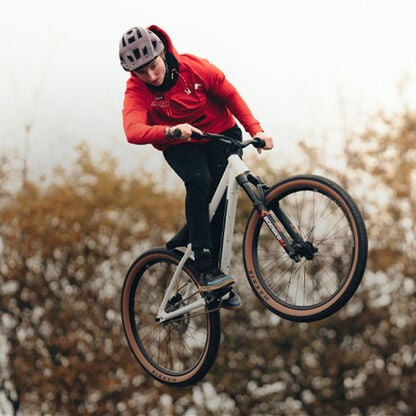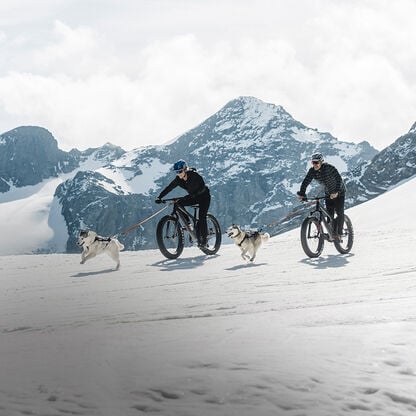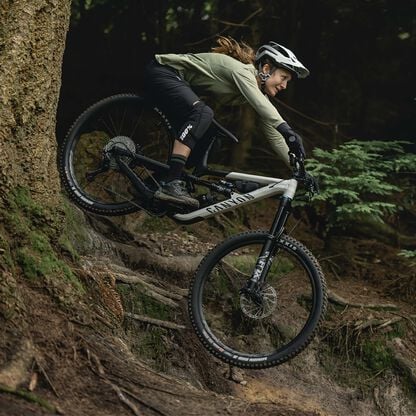How to choose a trail mountain bike: your ultimate buying guide
Searching for the perfect trail bike? Let us help you find the right one for you.
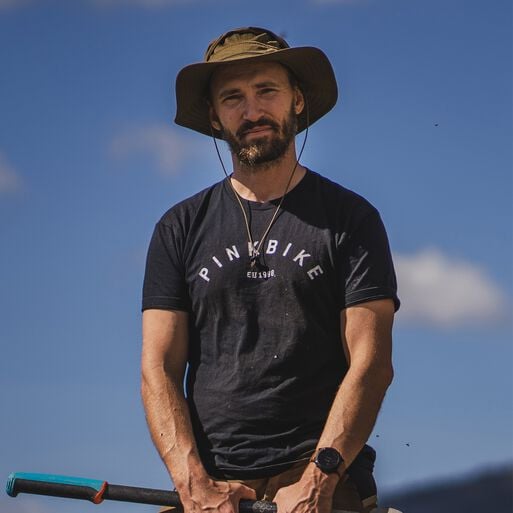

Mountain biking is about freedom. There is no right or wrong way to ride a mountain bike. Whether you want a sturdy bike for commuting and nipping to the shops, or you aspire to keep up with Troy Brosnan on a World Cup downhill course, all that matters is what you find fun. If you are looking for a bike to try as many different types of fun as possible, a trail MTB is the ideal mountain bike to ride.
Contents
What is a trail mountain bike
When people talk about a mountain bike, what they usually mean is a trail bicanke. These are versatile, capable bikes designed to do a bit of everything. More specialist bikes, like enduro or cross-country mountain bikes, tend to focus on one style of riding, but this comes at a cost. For example, an enduro bike will be more capable on downhill trails than a trail MTB. The trade-off is that some features, like sticky tyres, burly suspension and aggressive geometry, which help it charge down the toughest trails, also make it heavier and less agile when it’s time to climb back up the hill again.
Typically, trail MTBs have between 120 and 150mm of suspension travel (front and rear) with geometry and components designed to help you enjoy the widest possible range of riding conditions and styles. For most people, if they were looking for one bike to go mountain biking, a versatile trail bike would be the best option.
Hardtail or full-suspension for trail rides?
While there are many different styles of mountain bike riding (cross-country, trail, enduro, and downhill), there are essentially two types of mountain bike frame–the classic hardtail and the more modern full-suspension. A hardtail bike has a fully rigid frame with a suspension fork at the front, while a full-suspension bike also features bump-eating suspension at the rear. This makes full-suspension bikes more capable and comfortable on the trail. However, the extra suspension tends to make them more expensive and they require more maintenance to keep the rear suspension working correctly.
For many people, the hardtail vs full suspension choice comes down to budget. At Canyon, we work hard to make our entire mountain bike range as affordable as possible. That said, the simplicity of a model like the Grand Canyon hardtail means that we can offer it at a much lower price than our most affordable full-suspension bike, the Neuron AL. With no rear suspension to service, the lifetime costs of a trail bike hardtail will be lower too.
Of course, budget is not everything–some people just love hardtails. Many riders began their mountain bike journey on a hardtail, and there is an element of childish joy that these simpler bikes can offer those riders which a full-suspension trail bike just cannot match. What’s more, if your local trails are smooth and flowing, you might not feel like you need a full-suspension mountain bike at all. For most people, however, steep, rocky trails are much more manageable and fun when their bike features front and rear suspension. In short, the choice really comes down to balancing your budget and your personal riding preferences.
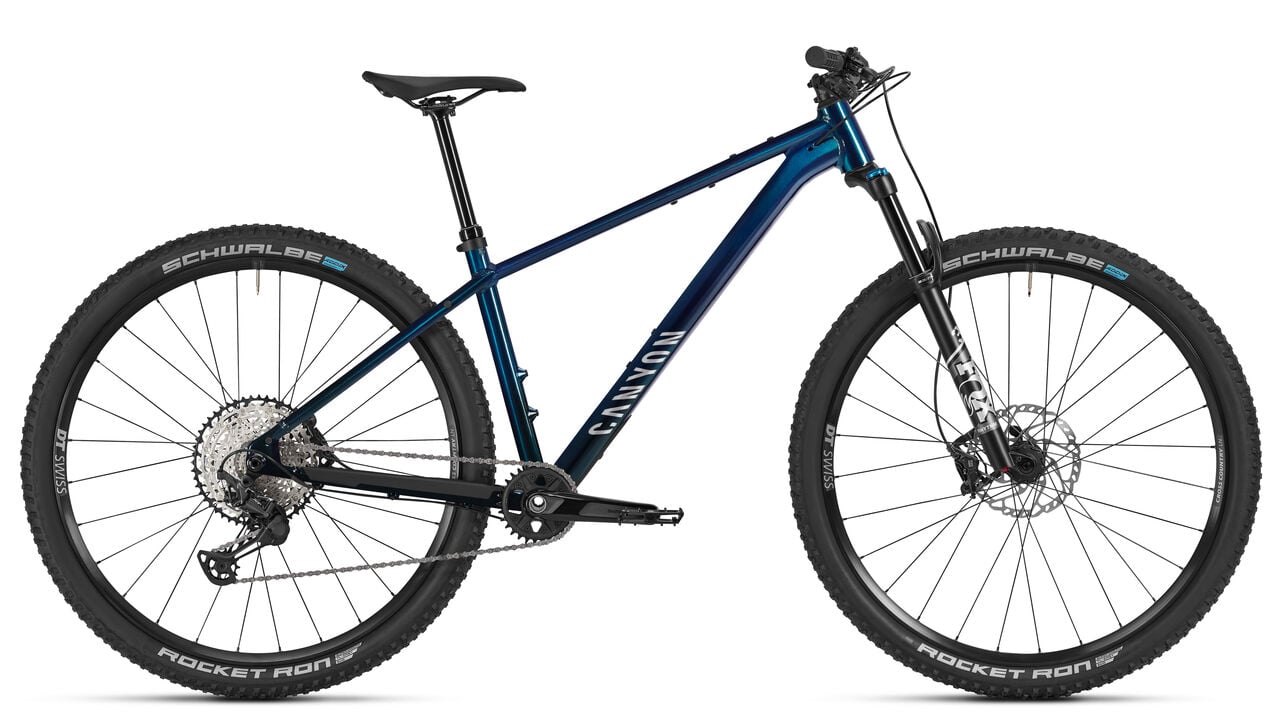
Trail MTB showdown: Grand Canyon vs. Neuron
- Grand Canyon 8 – agile and efficient hardtail built for speed, control, and climbing performance.
- Neuron 5 – versatile full-suspension bike offering comfort, traction, and confidence on rough trails.
Trail MTB geometry that balances climbing and descending
Geometry is a way of describing the frame of a mountain bike beyond the basic question of “does it fit me?” While the mountain bike geometry topic may seem a lot to dive into at first, when you understand what those numbers mean, you can get a decent idea of what a bike will feel like before you’ve even ridden it.
Head angles are one element of geometry you may have heard people talking about a lot. We use the terms “slack” and “steep” to describe a bike’s head angle. For example, our Sender downhill bike has a very slack head angle, which helps keep it stable on the extremely fast and steep World Cup downhill racecourses it was designed to dominate. By contrast, the Lux World Cup has a steeper head angle for faster steering in tight corners and for improved climbing on tight and twisty climbs.
The same language can be applied to seattubes. Here you are looking for balance. Our Strive enduro bike has a very steep seattube. This means that on the long climbs that make up much of enduro racing, you are in a very strong position to pedal. The downside is that on flatter trails, a steep seattube angle will put more weight on your wrists, which is why the Neuron trail mountain bike has a slacker seattube angle for a more versatile ride.
Reach is the other major number to consider. While reach is a big part of how the bike fits you, experienced riders may prefer a longer or shorter reach based on their riding preferences. A longer reach will make the bike more stable at high speeds, but harder to handle in tight sections. Choosing a bike with a shorter reach will make it more nimble on tight trails, but less stable at high speeds.
Designed to find the sweet spot between the extremes, our trail bikes have what we refer to as balanced geometry. This means that the head angle, seattube angle, reach and other geometry numbers will be moderate to help you enjoy the whole ride. If you would like to understand more about this, we have produced a short mountain bike geometry guide to help you decode the geometry table.
How to pick the right wheelsize
At Canyon, we design all of our bikes with a particular rider in mind, then we choose the wheelsize we think will suit that rider best. Our Neuron and Spectral trail mountain bikes are a great example of this philosophy. For most people, we think that 29-inch wheels are best for covering ground quickly; that’s why both models are offered with 29-inch wheels front and rear. However, aggressive riders often choose a smaller, 27.5-inch rear wheel, in what is called a “mullet’ setup, which allows them to turn the bike more easily on technical trails. This is why we’ve designed the Spectral to accommodate both configurations - full 29er or mullet...on the Spectral, it’s your choice.
The Neuron is aimed at less demanding riders. For that kind of rider, we think that having the easy-rolling 29-inch wheels will offer the best experience. The exception to this 29er-only set up is on the small and XS sizes. To make these bikes as easy to handle as possible for smaller riders, these models come with 27.5-inch wheels front and rear. With the aim of making the bike fun to ride for everyone, we believe that comfortable fit and ease-of-handling is more important than the speed benefits of the bigger 29-inch wheels. Our mountain bike wheelsize guide dives into this topic in more depth.
Essential features for a versatile trail bike
To do a bit of everything, trail bikes tend to have sturdy, versatile components. All of our mountain bikes come with wide-range cassettes and powerful hydraulic disc brakes. These are the absolute essentials. The big cassette makes climbing steep pitches easier and good brakes make the whole ride safer.
For trail riding, we think a dropper post is a great addition. This allows you to drop the saddle out of the way on steep descents, without having to stop and adjust your bike. When it comes to technical sections, this gives you much more confidence and control to enjoy the descents with the saddle out of the way. We also think that tubeless tyres are a must-have. They allow you to run lower pressures for better grip and are less likely to puncture than a tyre with an inner tube inside. While all of our bikes arrive on your doorstep equipped with tubes, the vast majority are equipped with tubeless-compatible wheelsets and tyres, which makes it easy to ditch the inner tubes and go tubeless, should you desire to do so.

Trail MTB or e-MTB: finding the best fit for your rides
We offer e-MTB versions of most of our trail bikes, allowing you to find the bike that best suits your riding style. Some people prefer the simplicity of a traditional mountain bike, while for others, the addition of a motor is an awesome game-changer. The assistance from the motor allows you to ride further, cover ground faster, and attempt more technical climbs than you could on a regular mountain bike.
For each model, we design our bikes with a particular rider in mind. For example, whether you choose a Neuron MTB or a Neuron:ON e-MTB, you can expect the same kind of experience. This means that their geometry, suspension and components will be similar, so the question for you is whether you want to ride with the power boost of a motor or whether you prefer to be your sole source of power.
Browse Canyon’s trail bikes
We offer several models of MTB and e-MTB designed for trail riding that are split into different families. Each family is designed with the same kind of rider in mind, so the question is then whether you would like some assistance on the ride or not:
Neuron
The Neuron bikes are designed for riders looking for a fun, confidence-inspiring riding. Whether you want to explore your local trails or adventure further afield, they are great all-rounders with balanced geometry, robust components and comfortable suspension. For smaller riders, the S and XS sizes come with 27.5-inch wheels to help keep the handling easy.
Spectral
With more advanced riders in mind, the Spectral family are what we call our progressive trail bikes. From your local woods to high-mountain adventures, the Spectral is for riders who don’t just care about where they go, but how they get there. With slacker head angles, longer reaches and more aggressive suspension, Spectrals are great for riders looking to pop, carve and shred their way along the trail. The Spectral is offered in both full-29 or 29/27.5-inch “mullet” wheelsize configurations for maximum fun.
Grand Canyon
Low on price, but big on fun, the Grand Canyon bikes are our most affordable trail bikes. These simple hardtails have progressive geometry and sturdy builds to put a huge smile on your face at a more accessible price. The only thing they don’t have is the greater complexity and cost of rear suspension. The S and XS sizes are equipped with 27.5-inch wheels, so smaller riders can enjoy intuitive handling on the trail.
Lux Trail
Taking our World Cup-winning Lux platform, extending the travel and equipping it with more downhill-oriented components makes the Lux Trail a no-compromise bike for covering ground. With a super light frame, fast cross-country geometry and a stiff chassis, it is designed to surprise you up and down the hills all day long. This speed machine is only offered with 29-inch wheels.
Budget and value considerations for trail MTBs
Canyon’s trail mountain bike range is designed to make great riding accessible to everyone - from first-time riders to seasoned pros. Models like the Grand Canyon, Neuron, and Spectral all come in different frame materials and builds, so you can choose the perfect balance of performance and price. Each model name gives a quick clue: AL stands for aluminium - strong, reliable, and great value - while CF marks our lightweight carbon fibre options for riders chasing lower weight and higher stiffness. The model number then tells you the spec level of the bike.
Take the Spectral lineup as an example:
Spectral AL 5
The Spectral Al 5 is the most affordable model in the Spectral range. At this price point, it comes with a slightly heavier aluminium frame that delivers all the fun of the more expensive carbon options, but at a lower price. It is equipped with burly suspension, sturdy wheels, tubeless tyres and powerful brakes. The only compromise is that to reach this price, it does not come with a dropper seatpost.
Spectral CF 7
The most affordable of our carbon fibre models, the Spectral CF7 has everything you need and nothing you don’t. It comes ready to shred right out of the box thanks to its lightweight carbon-fibre frame that boasts our innovative KIS steering stabilizer system, high-performance suspension, a wide-range 12-speed drivetrain, tubeless tyres, and a dropper seatpost.
Spectral CF 9
The ultimate trail mountain bike and the winner of Pinkbike’s coveted Best Trail Bike award. Sharing the same carbon fibre frame as the CF7, the Spectral CF9 adds high-end suspension and an electronically-activated drivetrain to the recipe, making it even sweeter.

Finding the right size and fit when choosing a trail mountain bike
The single most important thing when buying a new bike is the size and fit. You can change components, but if the frame is either too small or too large, you will never be able to fully enjoy your bike. You can use our Perfect Position System to find the trail bike that fits you perfectly. In just five minutes, with a few simple items, you can get a recommendation that our data shows is right for 98% of people. If you would like more information on how to properly size a mountain bike, we have produced a mountain bike sizing guide to walk you through the steps.
Maintenance and long-term ownership
Every mountain bike and e-MTB will need maintenance to keep it working correctly. Suspension should be serviced every year to keep it running smoothly. If you neglect to keep your suspension in good condition, damage can build up inside the suspension fork or shock, requiring you to replace it prematurely. If you choose a full-suspension bike, you will also need to check the frame bearings at least once a year, ensuring that they are not contaminated with dirt, which will also lead to excessive wear and tear.
Your chain and cassette both have a limited lifespan. They need to be checked from time to time, so that you can replace them before they get too worn and (in the case of the chain) snap out on the trail. Hydraulic brakes not only need the pads and discs changed when they wear down, but the hydraulic lines will need to be bled. It’s a good idea to bleed the brakes once a year. This is usually a job for a professional mechanic. Without routine brake bleeds air can accumulate in the brakes hoses, leaving you with inconsistent braking - which can pose a risk to your safety.
Find your perfect trail MTB and start the adventure
Trail riding is the heart and soul of mountain biking. While the specialist disciplines are fun, nothing beats getting out there and riding whatever you can find… and a trail bike is perfect for that. We encourage all riders to take a moment and think about what they want from their trail MTB.
Do you prefer climbing or shredding the descents? Are you the kind of rider who prefers to ride their local trails or would you rather head out and explore new places? Working out the right balance for you will help you find the right bike.
Because trail riding means so many different things to different people, there are no right or wrong answers. It’s all a matter of finding the bike that best matches your preferences. For a more detailed look into different types of mountain bike, we have a buyers' guide to help you find the right MTB for you. Our Bike Finder tool can help you figure out which type of mountain bike might be best for you. We also have a Bike Comparison tool, if you would like to compare different spec levels for our trail mountain bikes.
And remember – whichever model you choose, the best trail bike is the one that gets you out riding. See you on the next climb and flowy descent.
Discover our Mountain Bikes
Did this article help?
Thank you for your feedback
-
 About the author
About the authorMatt Wragg
Get to know Matt Wragg, the freelance photographer, writer, and self-proclaimed bicycle-breaker based in Nice, France. Despite unsuccessful attempts at XC, trials, 4X, and DH racing, Matt's passion for mountain biking never waned. After a stint in communications consulting, he decided to pursue his love for cycling and moved to New Zealand. Since then, he has traveled the world, chasing trails and building a successful career as a cycling photographer and writer. In 2021, he was diagnosed as autistic and has been coming to terms with it. His bike cellar is a true testament to his love for cycling, housing bikes that range from freeride to cargo.
